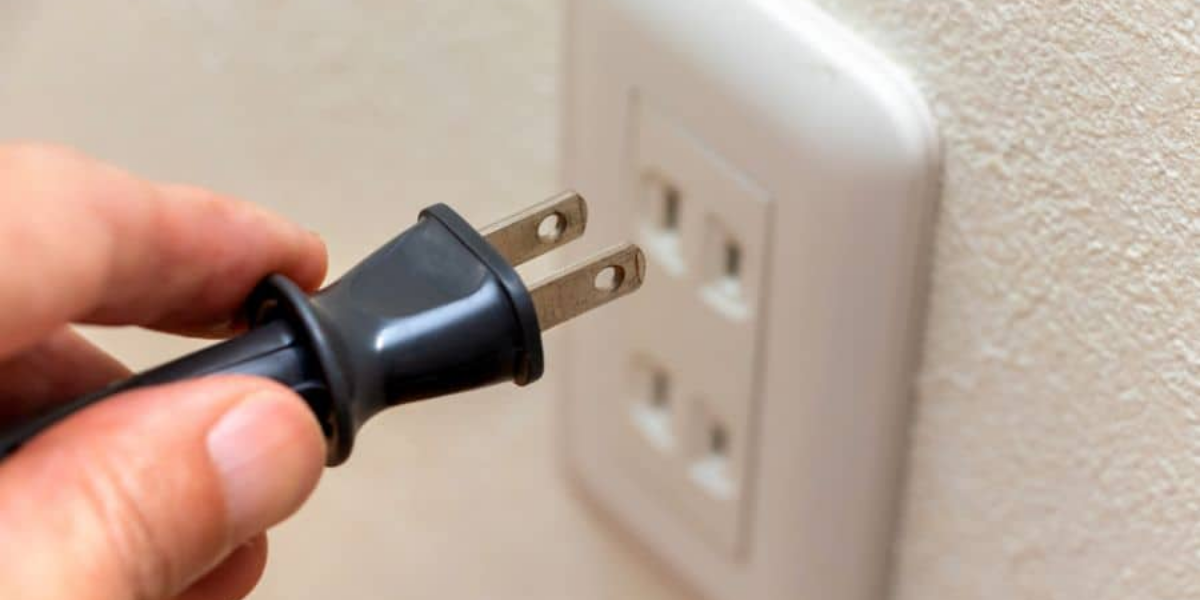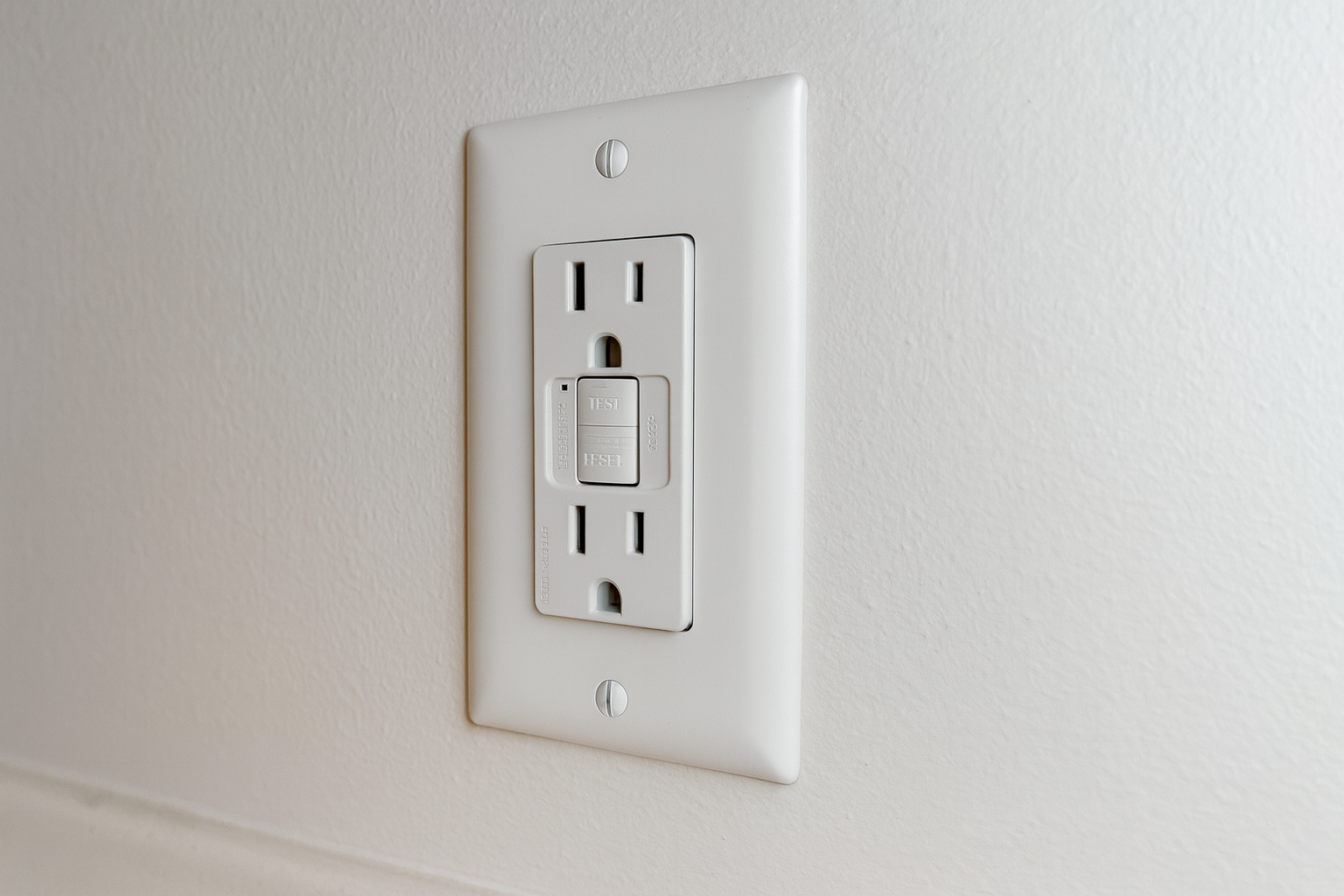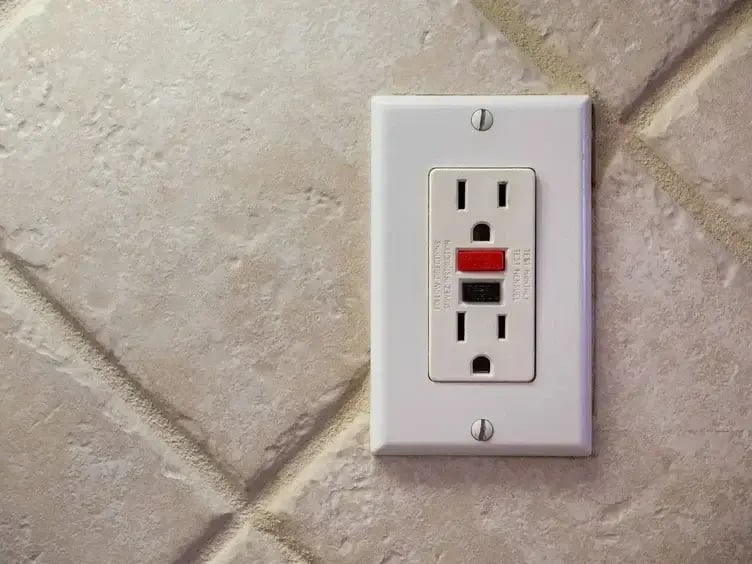The 4 Biggest Problems With Two-Prong Outlets
October 21st, 2025
4 min read
.png?width=1200&height=600&name=2Prong%20(1).png)
You’ve probably seen them in older homes, those outlets with only two holes instead of three. They might seem harmless, especially if they’ve “worked fine for years.” But here’s the thing: two-prong outlets are missing something important. And that missing piece could put your family, your electronics, and even your home at risk.
At Integra Electrical, we’ve helped countless Iowa homeowners upgrade from outdated, unsafe outlets to modern ones that meet today’s safety standards. We’ve seen firsthand what can go wrong when those two-prong outlets are left in place, and it’s not worth the gamble.
The 4 biggest problems with two-prong outlets are:
- They have no grounding protection
- They have a higher fire risk
- They limit what you can plug in
- They usually have hidden wiring issues behind the wall
Problem 1: No Grounding Protection
That third hole in a modern outlet isn’t just for looks; it’s a path for excess electricity to safely travel into the ground if something goes wrong. Two-prong outlets don’t have that path, which means they don’t meet today’s electric code.
Without grounding, a sudden surge of electricity (from a lightning strike, faulty appliance, or even static buildup) has nowhere safe to go. Instead, it can run through whatever is plugged in, including your expensive electronics, or worse, through you if you touch the device at the wrong moment..png?width=276&height=345&name=2Prong%20(2).png)
We’ve seen everything from fried TV screens to shocked homeowners, all because the outlet couldn’t direct that extra power where it belonged. Even if nothing “seems wrong” today, a single surge can turn a quiet problem into an expensive emergency.
Problem 2: Higher Fire Risk
Two-prong outlets were designed decades ago, back when most homes had fewer appliances and smaller electrical demands. Today, we plug in way more, and that old outlet design just isn’t built to handle it. Over time, wires can loosen, insulation can break down, and heat can build up where you can’t see it. That heat is what can eventually spark a fire.
Picture this: Linda moves into a cute 1950s ranch and decides to plug her space heater and her “vintage but totally safe” lamp into the same two-prong outlet. Ten minutes later, she notices the outlet plate is warm… warmer than her coffee mug. She does the reasonable thing, unplugs everything, and wonders if her lamp is actually trying to kill her.
That’s the trouble with overheating outlets. They don’t flash a warning light or play a dramatic siren. They quietly get hotter until one day they cause real damage, and by then, it’s way past “just swap the lamp.”
Problem 3: Limits What You Can Plug In
Two-prong outlets don’t just skip out on safety; they’re picky about what they’ll accept. Many modern appliances, chargers, and tools have three-prong plugs, and without that third slot, you’re either out of luck or rummaging for an adapter you swore was in the junk drawer.
And even if you find one, those little “cheater plugs” can feel about as sturdy as a toothpick bridge. They might make your cord fit, but they don’t magically add grounding protection. It’s like wearing a bike helmet made of paper, sure, it’s technically on your head, but it’s not doing what you think it is.
Problem 4: Hidden Wiring Issues Behind the Wall
Sometimes the danger with two-prong outlets isn’t the outlet itself; it’s what’s hiding behind it. Old wiring that’s brittle, poorly spliced, or wrapped in tape older than your favorite classic rock album can be waiting just out of sight.
The only way to know what’s going on is to have the wiring inspected. That way, you’re not relying on electrical work that may have been “good enough” back when rotary phones were still the hot new thing.
Your Options for Upgrading Two-Prong Outlets
If you’ve got two-prong outlets, the good news is you’re not stuck with them forever. There are safe, code-compliant ways to bring your outlets into the modern age, and none of them involve duct tape or hoping for the best.
Option 1: Replace with Grounded Outlets
The gold standard is running a new ground wire and installing three-prong outlets. This gives you full protection and the freedom to plug in just about anything without adapters that feel like they belong in a dollar store mystery bin.
Option 2: Install GFCI Outlets
If adding a ground wire isn’t practical, a GFCI outlet can still protect you from shocks by shutting off power when it senses a problem. It won’t ground your outlet, but it will keep you safer, like wearing a life jacket when you can’t get a boat.
Option 3: Upgrade the Circuit
Sometimes the safest move is to replace the wiring for that entire circuit. It’s a bigger project, but it’s like trading in an old flip phone for a modern smartphone; suddenly, everything works better, faster, and with more safety features.
Next Steps
If you’re not sure which route is right for your home, we can help. At Integra Electrical, we’ll check your outlets, look at the wiring behind them, and walk you through the safest, most cost-effective options. No scare tactics, no “mystery fees,” just clear answers so you can feel confident in your decision.
Your outlets might be small, but they’re a big part of your home’s safety. Let’s make sure they’re doing their job, and not secretly auditioning to be the villain in your “how my house almost burned down” story.
Frequently Asked Questions About Two-Prong Outlets
Are two-prong outlets dangerous?
They can be. While they might work fine for years, they lack grounding protection, which increases the risk of shocks, damaged electronics, and, in some cases, electrical fires.
Can I just use an adapter to plug in three-prong cords?
Adapters don’t add grounding; they only let the plug fit. It’s like putting a square peg in a round hole with a hammer; it might fit, but it’s not actually solving the problem.
Is replacing two-prong outlets expensive?
It depends on how your home is wired. In some cases, a quick upgrade is possible. In others, rewiring may be needed to make the outlet truly safe. An in-home evaluation will give you a clear answer.
Do I need to replace all two-prong outlets at once?
Not necessarily. You can prioritize high-use areas or outlets that power sensitive electronics, then upgrade the rest over time.
Daniel Carpenter is a licensed electrician on Integra’s installation team. He got his license at just 19, but he's been around the trade his whole life. With five years on the job and a heart for helping homeowners, Daniel takes pride in doing quality work that serves the local community.
Topics:











